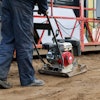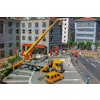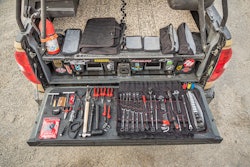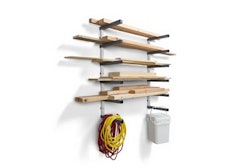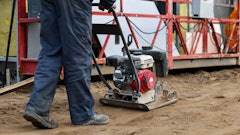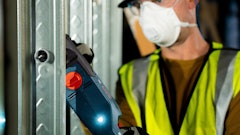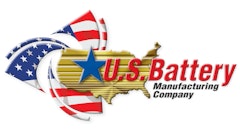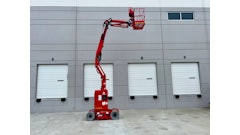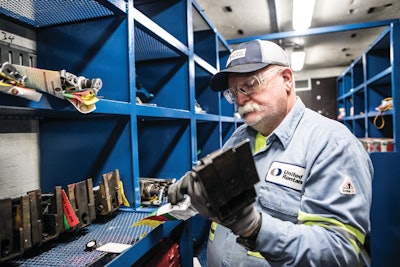
Having the right tool at the right time is an essential ingredient in driving workforce productivity that keeps a worksite moving. Here are key considerations for companies in creating a tools strategy that helps them safely achieve project objectives and budget goals.
Many variables go into a company’s decision to buy or rent tools, but rental is increasingly used to supplement existing fleet. Tool rental provides the opportunity to address project specifications with a solution such as single tools, custom-stocked toolboxes and managed tool trailers. Also, some jobs require specific tools to adhere to standards and requirements. Renting tools can fill gaps that help teams and projects be compliant. Rental tool solutions can include power tools, chain hoists, piping tools, welding, torque wrenches, lighting, pneumatic-powered tools, radios and more; these can all be tracked with GPS software.
“Creating a tool strategy is about more than whether to own or rent tools, it’s about optimizing labor productivity,” said Greg Jones, tools regional sales and marketing director, United Rentals. “A sound strategy facilitates quick tool access to improve jobsite performance while also helping companies preserve capital and minimize loss and overconsumption. Companies that rent top-quality, well-maintained tools as part of this strategy can streamline operations and decrease downtime through onsite availability to keep worksites moving.”
Hidden Costs of Tool Ownership
An important step in creating an effective tool strategy is looking at the total cost of the investment. A close examination often can reveal hidden expenses that may have been missed in initial project planning. Here are areas that need to be included in this review.
Maintenance. All tools require some maintenance and the associated costs to keep them in good and safe working condition. Ignoring essential maintenance can not only shorten the tool lifespan, but it leads to additional, and costly, replacements.
Repair and Replacement. There is no real test to know how long a tool will last, but quality can be an indicator of its lifespan. If a tool breaks and the warranty does not cover the damage, the cost of repair or replacement is on the owner and contributes to the overall price tag.
Tracking. With any size fleet, tracking owned tools can turn into a full-time job. For tools in repair, in good condition and in use, tracking takes time and ultimately adds to the project budget.
Storage. Storing tools requires space, which costs money. The more tools a company owns, the more storage space they will need.
Insurance. Companies that invest in high-tech tools–for instance, inverter welding equipment–may also invest in a tool insurance policy that covers loss or damage to protect the investment. Also, tools that create liability, such as tuggers and hoists, require certifications.
Theft. Tool loss is greatest on worksites that do not have tracking, tracing or some sort of accountability for tool use. The frustrating buy-lose-buy cycle can send a tool budget skyrocketing and erode profitability.
Capital Preservation. Buying tools, especially expensive ones, creates an opportunity cost. As companies put the money into tools, they lose the opportunity to use the capital in other ways.
Key Elements in Smart Tool Rental Decisions
After companies examine the full costs involved in purchasing and keeping a tool inventory, many recognize it is more cost-effective to rent tools rather than own them, except for basic tools that are used every day. Here are three considerations that can help guide companies in making smart tool rental decisions that address worksite needs.
1. Tool Expertise. Tool and equipment rental providers should have specially trained experts available to help determine the right tools and supplies for the job–scaled and configured to the project scope. These experts can help bridge any gaps between estimating and project management teams, budgeting for tool costs in the planning process. The tool rental experts are a resource and can deliver value when planning and tracking inventory, conducting inspections and providing maintenance to keep crews productive and ultimately minimize downtime.
2. Inventory for Project Lifecycle. Renting tools can help level out inefficiencies during a project’s lifecycle. In most cases, different stages of a project require different sets of tools, and the cost of a large, scalable tool fleet adds up. Renting helps a company shave cost off the purchase budget because there is no need to overstock the fleet to handle peak periods, only to let tools sit idle afterward. This inventory also needs to address specialized project requirements as necessary.
3. Tool Tracking. A large tool fleet is a lot to manage, so a rental provider should provide a tool management system that keeps up-to-date electronic histories for tools and materials on site. Long gone are the days of missing tools that “walked away.” By tracking tools throughout the project cycle, companies gain visibility into potential issues and can act on opportunities for more productivity and cost-savings.


